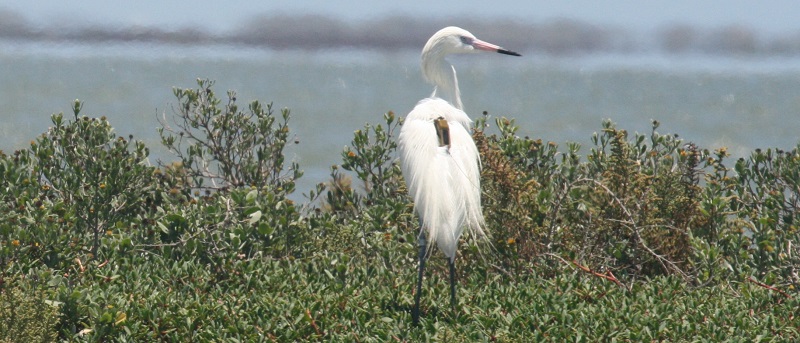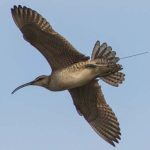← Back
Identifying reddish egrets stopover sites to protect their migrations

Migratory birds, especially those which depend on coastal wetland habitats, are among the threatened animals. Identifying the key sites in their life cycle, including the stopovers used during migration, is important for conservation efforts. Argos satellite telemetry can help by providing locations along the migrations and measuring residency time at stopover sites. Example of the reddish egrets.
Photo : a reddish egret with an Argos PTT (credit Dr. Bart Ballard)
Reddish egrets (Egretta rufescens) are near-threatened or endangered birds living in coastal habitats in North and Central Americas. It is migratory, and as such, this period is critical to its population, and a potential source of threats. There was little known about their migration until recently and tracking technology has brought knowledge on their migration rate (about 25% of the marked population captured during the breeding season in the Laguna Madre, Texas, USA migrate to Mexico or El Salvador), and on their breeding and wintering sites.
However, stopovers along the way can also be crucial, especially when some sites are frequented by a large part of the migratory population (site fidelity) (see American woodcock are tracked using Argos satellite telemetry, Ruddy-headed geese, endangered sheldgeese on South American continent, Full annual cycle tracking helps to explain differences in population trends of far eastern curlew, Chinese and Japanese sparrowhawks fly over the East-Asian continent).
Tracking reddish egrets’ migration stopovers
Thirty reddish egrets were equipped with Argos-GPS PTTs during the breeding seasons of 2010-2012 and 2014, at breeding colonies in the Laguna Madre (Texas). This site supports about one third of the breeding Reddish Egrets in the world, the largest concentration found of them.
, which went southward along the Gulf Coast of Mexico, across the Isthmus of Tehuantepec, and wintered on the Pacific Coast of Mexico, Guatemala, and El Salvador (i.e. over 700 km) or flew across the Gulf of Mexico to winter along the Yucatán Peninsula.
More info about animal tracking with Argos

Migration paths and stopover sites (numbered boxes) used by adult Reddish Egrets migrating from Texas, USA, to the Pacific Coast of Mexico and El Salvador during 2010-2016 (colors represent different individuals)
(1) Laguna Madre, Texas (breeding site), (2) Laguna Madre, Tamaulipas, (3) Laguna San Andres, (4) Laguna Tamiahua, (5) Laguna Tampamachoco, (6) Rio Antigua, and (7) Laguna Superior/Laguna Inferior/Laguna Mar Muerto system. (from [Koczur et al., 2022]
Stopover sites were defined as locations in which an individual remained for at least two consecutive location fixes (with six locations per day, at 08:00, 09:00, 16:00, 17:00, 24:00, and 01:00 (CST)). Fidelity to stopover sites was recorded when an individual used the same site across successive migrations. The tracking enabled to record twenty-two migrations total. During those, five sites were consistently used (by more than one individual or by the same several years, or for a long period).
The different individuals showed different behaviors, including routes and choice of stopovers, with also differences between spring and autumn migrations. However, five sites were consistently used. Among those one, the Laguna San Andres, was used by all of them, except for the bird which flew across the Gulf of Mexico. The Laguna Madre was used by two-third of them.
Implications for conservation
The importance of specific stopover sites must be evaluated for efforts of conservation. High efforts are especially important when a site is shown fidelity by the migrating species, all the more for specialized habitat such as wetlands for the reddish egrets.
Only one of the stopover sites identified in the study (Laguna Madre of Tamaulipas) is a protected area. Laguna San Andres should be a priority for protection of the reddish egret. More tracking should help in consolidating the conclusion and understand better the respective importance and role of all the identified stopover sites.
Reference
- Koczur, L. M., and B. M. Ballard. 2022. Migratory stopover sites used by Reddish Egrets: prioritization for conservation. Avian Conservation and Ecology 17(1):15. https://doi.org/10.5751/ACE-01973-170115

